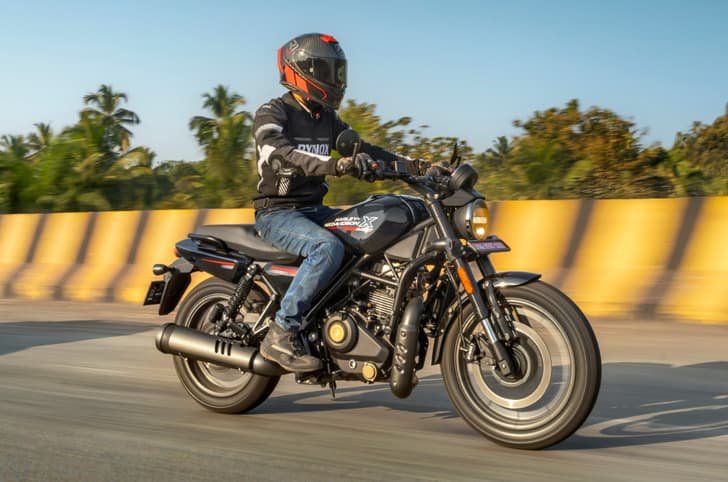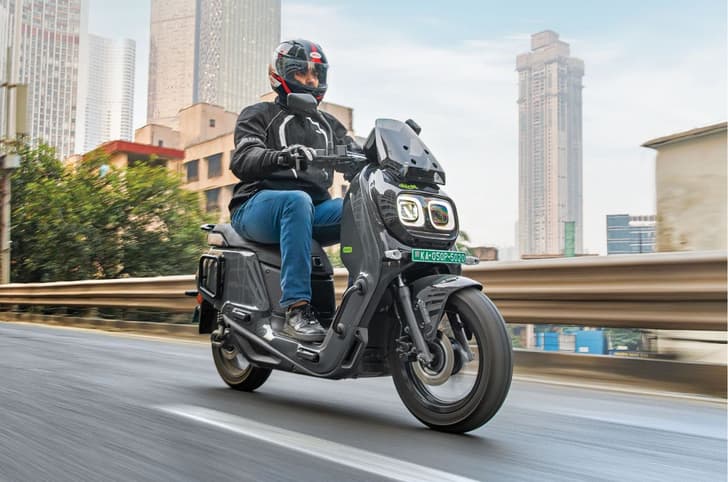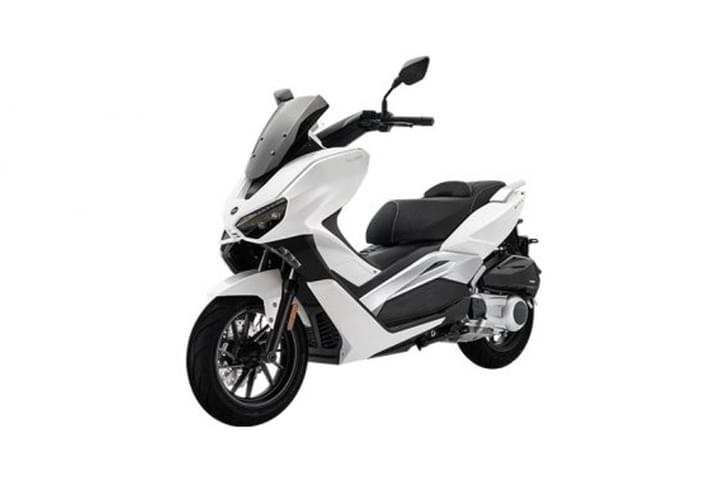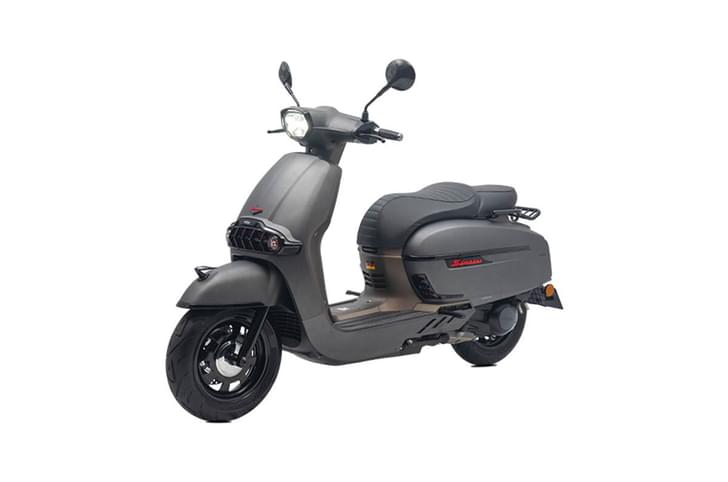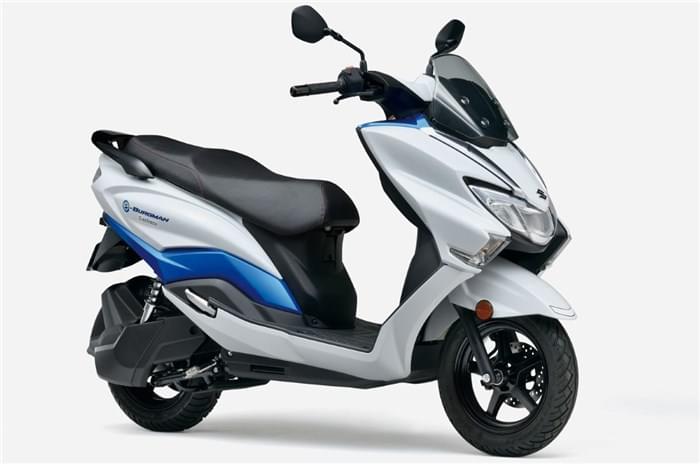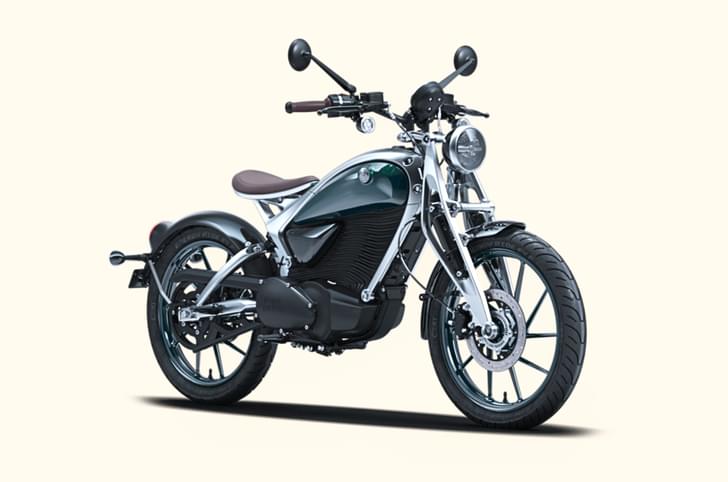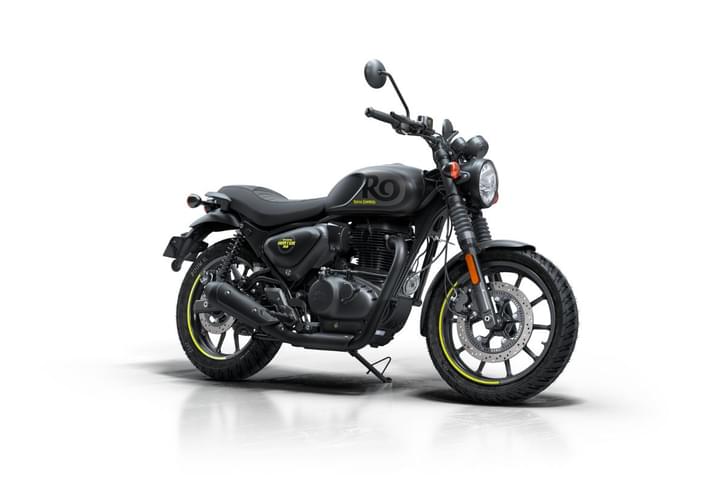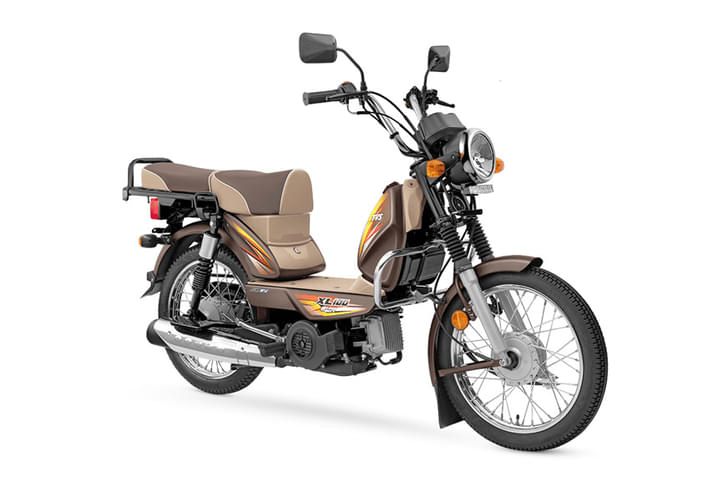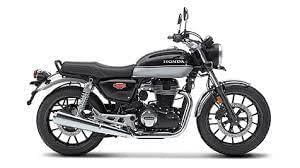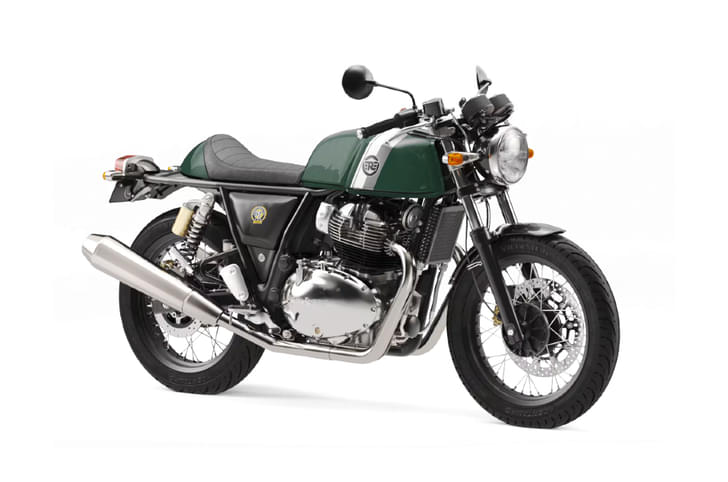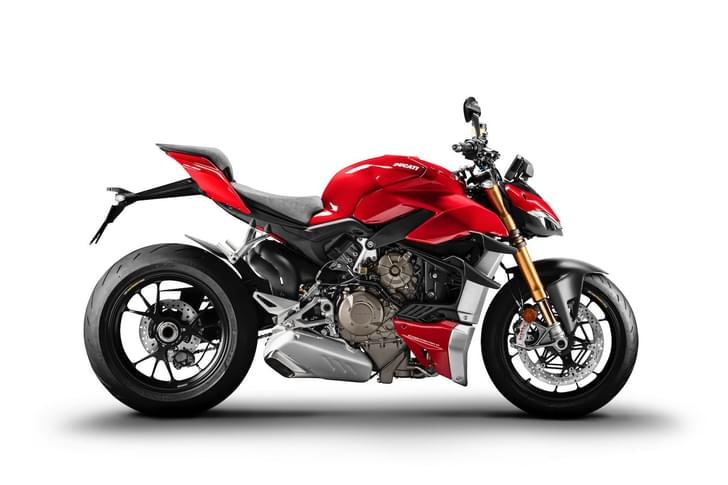We are probably still years away from having widespread charging stations across major cities, and besides, it’s not only cities but smaller towns and villages that contribute significantly to overall two-wheeler sales. What the EV space really needs in the current scenario is a high-quality electric two-wheeler that doesn’t cost significantly more than the average petrol powered scooter. Our first ride review of the TVS iQube from last year revealed that it was on the right track, but we got our hands on it yet again to get a clearer picture. This time we’re going to put it through a full road test to let you know what it’s all about.
Something that doesn’t really need much revisiting is the iQube’s no-frills design. That said, there are a few things that stand out. Firstly, the fit and finish is up to the mark. You will notice no rough edges on both, inner and outer plastics. There are also no large or uneven panel gaps and the company has gone through the effort to neatly cover exposed hardware near the instrument display. TVS has also made the switch to a plastic cover for its charging socket, as opposed to the weak-feeling rubber one that was seen on the prototype. What we wish they’d also done is add a multifunction key slot, which would also open the underseat storage compartment, and provide a slightly longer side stand – the scooter leans quite a bit when parked.
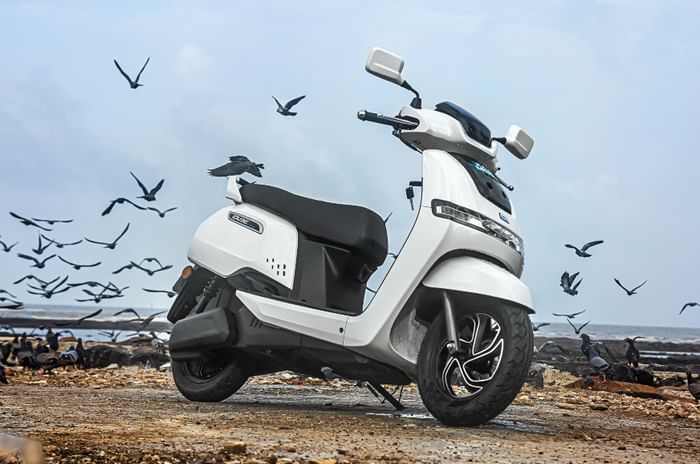
Speaking of which, the underseat compartment isn’t the most spacious and this is surprising because the company has an advantage when it comes to packaging. EVs with hub-mounted motors have most of the mechanical bits on the rear wheel, and all that’s inside the bodywork are batteries and some electrical components. Nonetheless, the space can house the portable charger, a small open face helmet and a few other things easily.
Other smaller elements that stood out were the premium pillion footrests and the swanky diamond-cut front alloy wheel that’s borrowed from the Jupiter. Remember when scooters used to come with floor mats? The iQube has brought that back and it’s a neat touch because it’s easily replaceable and will keep the floorboard protected from scuffs.
While we are on the subject of the floorboard, it’s crucial to point out that even though it houses battery packs, it’s not positioned too high. Thanks to this, the rider sits in a conventional riding position, instead of the awkward knee-up position one is forced to be in on many Chinese electric scooters. That’s not all, the handlebar and seat are also exactly where one would want it to be on a scooter like this. Someone of average height will have no trouble with the ergonomics of this machine.
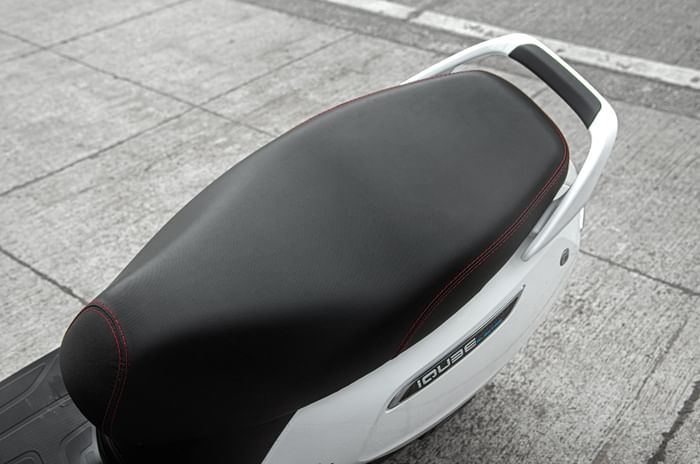
The iQube may not have the best presence in the segment, but it does look and feel the widest. As a result, its seat is roomy and comfortable for the rider. However, things do get a little cramped with a pillion on board.
Overall, TVS has got a lot of things right when it comes to the iQube’s design and even though it might look a little bland, let me tell you that it might just be a well thought out decision. The highest selling scooters in India are ones with simple, family friendly designs and it looks like that was the aim.
Moving on to the performance side of things, propulsion on the iQube comes from a Bosch-made hub-mounted motor. This unit has a peak power output of 4.4kW, putting it in between the Chetak and the Ather 450X. The torque figure, meanwhile, stands at 33Nm.
Before we get down to the nitty gritty, we’re happy to report that this motor doesn’t cut power when you lightly use the brakes. This is an issue that plagues Chinese electric scooters that use a similar powertrain setup. On the TVS though, there’s no issue, and thanks to it, the scooter isn’t as choppy in terms of power delivery in slow speed situations, like filtering through traffic or even taking U-turns.
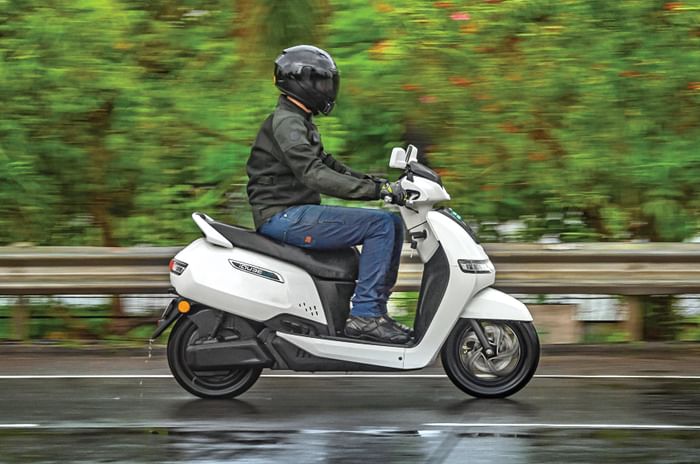
The iQube is also less instant in its power delivery at lower speeds, and this really keeps things feeling natural. However, once you pass that initial bit of sedate (for lack of a better word) acceleration, the scooter pulls up its skirt and runs. It gets to 60kph from standstill in 8.58sec. This makes it as quick, if not quicker, than most 125cc scooters, including the BS6 Ntorq 125. After 60kph, the acceleration slows down quite a bit, but it will manage to go up to a speedo-indicated top speed of 80kph in Power mode. If its top speed were to be compared to petrol-powered scooters, it would be more in line with 110cc scooters and not 125cc ones.
There’s also an Eco mode that limits the speed to around 48kph. Unlike most ridiculously slow Eco modes we’ve experienced on some Chinese EVs, this one offers performance you can actually live with in most situations; we only switched to Power when we needed the extra performance to keep up with fast-moving traffic on some of Mumbai’s bigger roads.
The scooter will let you switch from Eco to the more powerful mode on the move, which is quite nice for overtaking manoeuvres. That said, if you are in Power mode and above the Eco mode’s speed limit, it won’t let you switch back till you lower your speed. This isn’t a big issue, but it’s a minor irritant if you only want to use the Power button for sudden bursts of speed.
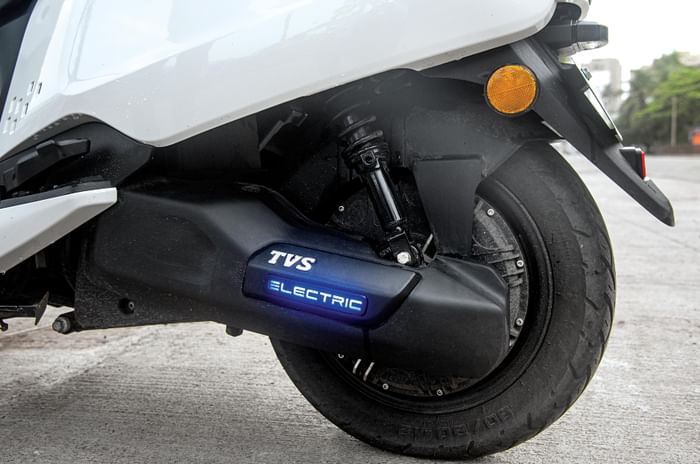
Something that does feel a little less natural than a petrol-powered scooter is the aggressive regenerative braking system. When it kicks in, as you go off the throttle, it will steadily slow down the scooter to a standstill, even if you are going downhill. You do eventually get used to it and end up using it like brakes, but it would’ve been nice if it was a little less aggressive or if there was a mode that would allow you to tweak the level.
The iQube uses the same 220mm front disc brake as the Jupiter and it’s adequately communicative and powerful. When we first rode the iQube at TVS’ test track, the rear drum brake was prone to locking up easily. Since then, TVS has re-tuned its CBS system and the rear is much better behaved, which in turn results in a safer braking setup.
RANGE
The iQube fares well when it comes to range. It managed to cover 48km in Power mode and a liveable 74km in Eco mode. The range in Power mode is impressive if you factor in that it doesn’t automatically switch to Eco in the last 20 percent of remaining battery life, like the Ather 450X does. Something else that was quite nice was that the performance didn’t drop significantly as it ran out of juice. We found that the iQube has a charge time of around 5 hours, which is only slightly higher than its rivals.
With Power (mode) comes responsibility. The iQube can be surprisingly quick for someone not used to EVs, which is why it’s reassuring to know that it’s got the chassis to handle it. The telescopic fork and twin shock absorbers do a fine job at keeping this thing planted at all times. The scooter rides on 12-inch wheels with TVS tyres that also aid the grip levels. Despite being quite heavy, at 118kg, most of its weight is masked well because of its lower centre of gravity.
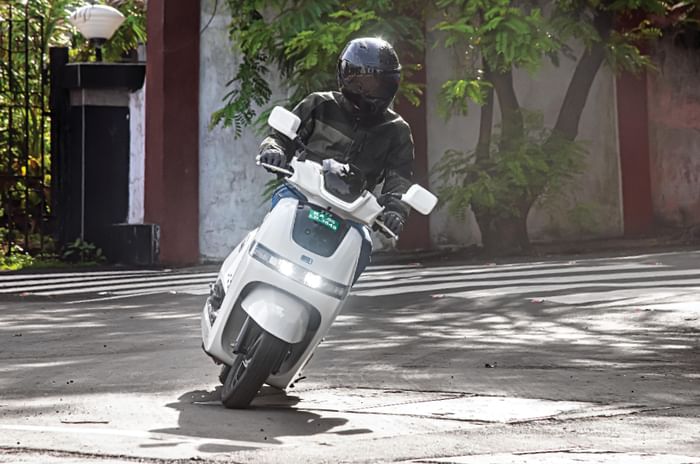
What this means is that the iQube is stable in the corners and doesn’t feel nervous or twitchy even though it runs narrower tyres than some 125cc petrol-powered scooters. While the iQube has got stability covered, the same can’t be said for agility. The steering feels heavy and by this we mean that the handlebar takes a little effort to turn when compared to most petrol-powered scooters and some electric scooters. It won’t be as flickable as some rivals in the city, but it’s not to the point of being problematic. The ride quality, on the other hand, is rather impressive. The plush suspension swallows almost every imperfection at low speeds, but hitting a pothole at higher speeds can bottom-out the soft telescopic fork.
What sets the iQube apart from every other two-wheeler that’s priced close to it is the TFT display. Superbikes from big Japanese brands still feature LCDs, whereas this Indian electric scooter gets a sharp colour screen. It comes with its own app that enables smartphone connectivity. With this, it displays turn-by-turn navigation, call and SMS alerts, trip information and more. It also shows information like the strength of your smartphone’s network and battery level. All that this display needs is a software update that’ll help it boot up quicker and fix the issue where it switches from night mode to day mode under streetlights. Other than those minor bugs, the display is perfect and a great addition to this scooter.

Like many other EVs, the TVS iQube gets a park assist function. This function has its own dedicated button that lets you switch between reverse and forward mode. The speed is limited to 3kph in reverse, while it goes up to 10kph in the forward direction. The scooter also has a USB charging port in the underseat storage area.
The iQube comes with a portable charging cable, but if you want a more permanent solution you’ll have to get the Smartxhome system that will cost you an additional Rs 10,000. While the optional charging system doesn’t provide faster charging, it does feature an RFID security feature, which means no one else can use your charger. TVS has said that fast charging affects the life of the lithium-ion batteries in the scooter, which is why it currently doesn’t support it.
With the latest FAME 2 subsidy increase, the iQube now costs much closer to 125cc scooters. In Delhi, where there is an additional subsidy available, it costs Rs 1 lakh, on-road. That makes this the first high-quality two-wheeler EV in India that is a legitimate rival to established petrol-powered scooters.
What TVS really has to work on now is availability and the customers should come running. It’s currently available only in Bengaluru, Chennai, Coimbatore and Delhi, although TVS says that it will expand to 20 cities by March 2022.
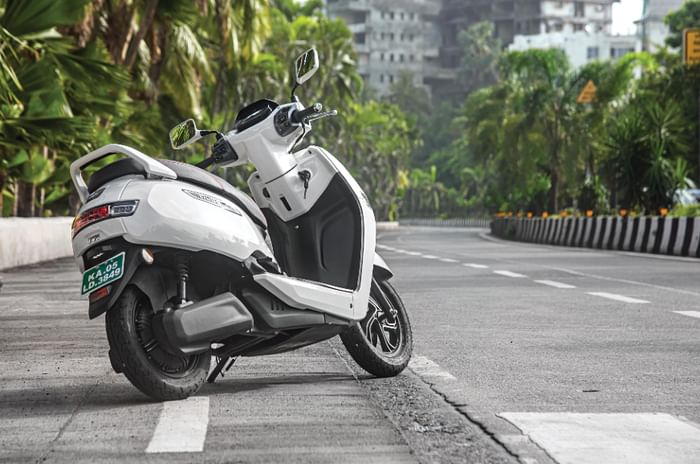
A family friendly design, an incredibly low running cost, a reasonably realistic range for daily city commutes, and the competitive price tag are things that can’t be ignored. If you also factor in the performance, ride quality and the TFT display, the TVS iQube is a no-brainer.
OWNERSHIP COSTS
To give you an idea, the TVS iQube has an approximate running cost of around Rs 0.3 per km, while a petrol-scooter costs closer to Rs 1.8 per km. The difference is so huge that you would end up saving roughly Rs 15,000 once you covered 10,000km and Rs 75,000 after 50,000km on the iQube. This amount is calculated based on the electricity and fuel consumption costs; EVs are also much more affordable in terms of service costs because there are no oils and filters that need changing. The battery is warranted for 3 years/50,000km, which should be reassuring for most typical scooter users.





